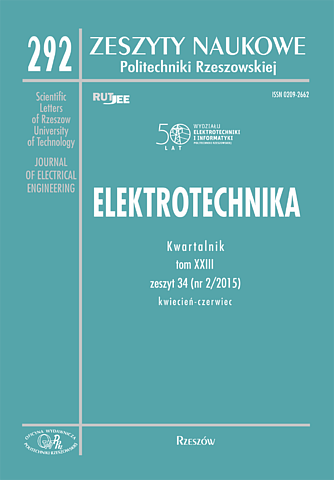Abstract
The main goal of this paper was study the impact of types of training data on the quality of the global model and the quality of simple models of dynamic complex system. It were considered two types of the training data: random data which contained 100 points with normal distribution and data which contained 400 points of interpolated random data. For simulations a dynamic complex system, which consists of two non-linear dynamic objects, connected in series was considered. The complex dynamic system is described by two nonlinear discrete functions. A global model of this system was built from multi-layer neural network in a dynamic structure. The global model was divided into two dynamic simple models in accordance to the construction of the complex system. As a global quality criterion was adopted the weighted sum of quality criteria of dynamic simple models. Two types of training data were generated: a set of random numbers with normal distribution in interval <-1,1> and a set of interpolated random numbers (i.e. interpolation of the first random set) in interval <-1,1>. The random set contains 100 numbers, the interpolated set contains 400 numbers.
Kind of training random data has an influence on the learning speed of the models, and has an influence on the quality of the simple models and the global model. Interpolated random data significantly improves (about 8 times) the quality of the dynamic global model of the complex system. The obtained results show, that by appropriate choice of the training data can be obtained very good quality of the global model (i.e. the BP(2) index reaches less than 1 percent) and at the same time very high quality of the first simple model (i.e. the BP(1) index reaches a value of about 2 percent).
References
[2] Dahleh MA., Venkatesh Sr., System Identification for Complex Systems: Problem Formulation and Resuls, In Proceedings of the 36th IEEE Conf. on Dec. and Control, 1997.
[3] Czemplik A.: Modele dynamiki układów fizycznych dla inżynierów. Zasady i przykłady konstrukcji modeli dynamicznych obiektów automatyki, WNT, Warszawa 2008.
[4] Drałus G., Świątek J.: Sieci neuronowe w modelowaniu złożonego obiektu chemicznego. XIV Krajowa Konferencja Automatyki, Zielona Góra, 2002, s.825-830.
[5] Drałus G., Modeling of Dynamic Nonlinear Complex Systems Using Neural Networks. Proceedings of the 15th “International Conference on Systems Science”, Wrocław, 2004, vol. III, pp.87-96.
[6] Drałus G., Świątek J., Static and dynamic complex models: comparison and application to chemical systems, Kybernetes: The International Journal of Systems & Cybernetics, Emerald, Vol. 38, No.7/8, 2009.
[7] Józefczyk J., Wybrane problemy podejmowania decyzji w kompleksach operacji, Oficyna Wydawnicza Politechniki Wrocławskiej, Wrocław 2001.
[8] Ljung L.: System Identification. Theory for the user, Prentice Hall, 1987
[9] Narendra K.S., Parthasarathy K., Identification and Control of Dynamic Systems Using Neural Network, IEEE Trans. On Neural Networks, 1990, vol 1. No.1, s.4- 27
[10] Osowski S.: Modelowanie i symulacja układów i procesów dynamicznych, Oficyna Wydawnicza Politechniki Warszawskiej, Warszawa 2007.
[11] Riedmiller M., Braun H., RPROP – a fast adaptive learning algorithm, Technical Report, University Karlsruhe, 1992.





